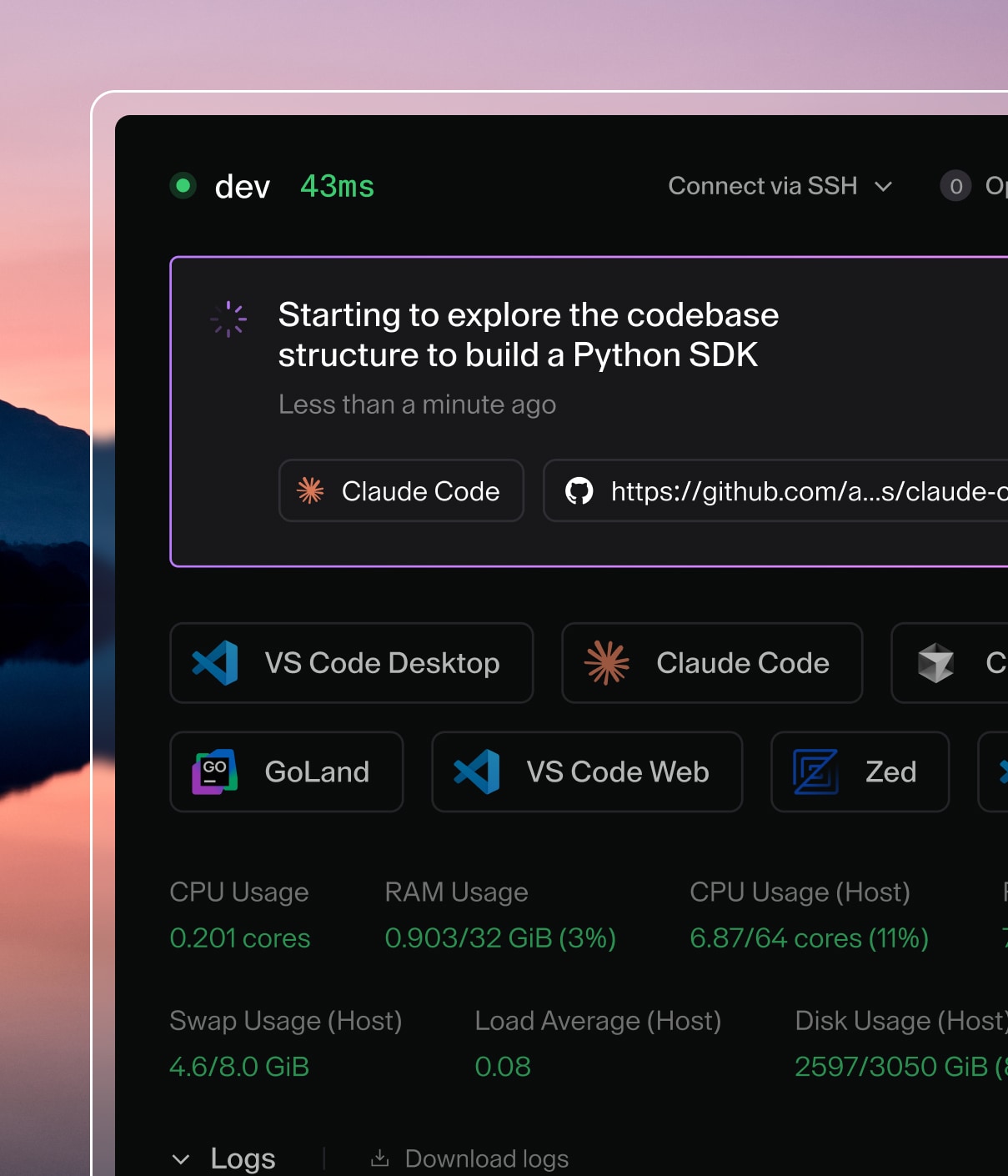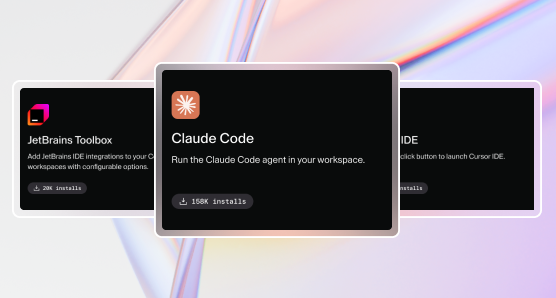Podman
This article will walk you through setting up Podman for use in Coder workspaces
Podman is a container engine (similar to Docker) that is compatible with the OCI containers specification. Podman is useful if you'd like an alternative to CVM workspaces or if your Linux kernel doesn't support CVMs.
Prior to completing the steps below, please review the following Podman documentation:
If you are receiving permission denied errors when running Podman, please see
the below article:
-
Install
smarter-device-managerand expose the FUSE device through it. To do so, create a file calledsmarter-device-manager.yamlwith the following contents:apiVersion: v1 kind: Namespace metadata: name: smarter-device-manager labels: name: smarter-device-manager --- apiVersion: v1 kind: ResourceQuota metadata: name: smarter-device-manager namespace: smarter-device-manager spec: hard: pods: 50 scopeSelector: matchExpressions: - operator: In scopeName: PriorityClass values: - system-node-critical - system-cluster-critical --- apiVersion: v1 kind: ConfigMap metadata: name: smarter-device-manager namespace: smarter-device-manager data: conf.yaml: |+ - devicematch: ^fuse$ nummaxdevices: 50 --- apiVersion: apps/v1 kind: DaemonSet metadata: name: smarter-device-manager namespace: smarter-device-manager labels: name: smarter-device-manager role: agent spec: selector: matchLabels: name: smarter-device-manager updateStrategy: type: RollingUpdate template: metadata: labels: name: smarter-device-manager annotations: node.kubernetes.io/bootstrap-checkpoint: "true" spec: nodeSelector: smarter-device-manager: enabled priorityClassName: "system-node-critical" hostname: smarter-device-management hostNetwork: true dnsPolicy: ClusterFirstWithHostNet containers: - name: smarter-device-manager image: registry.gitlab.com/arm-research/smarter/smarter-device-manager:v1.20.7 imagePullPolicy: IfNotPresent securityContext: allowPrivilegeEscalation: false capabilities: drop: ["ALL"] resources: limits: cpu: 100m memory: 15Mi requests: cpu: 10m memory: 15Mi volumeMounts: - name: device-plugin mountPath: /var/lib/kubelet/device-plugins - name: dev-dir mountPath: /dev - name: sys-dir mountPath: /sys - name: config mountPath: /root/config volumes: - name: device-plugin hostPath: path: /var/lib/kubelet/device-plugins - name: dev-dir hostPath: path: /dev - name: sys-dir hostPath: path: /sys - name: config configMap: name: smarter-device-manager terminationGracePeriodSeconds: 30Next, apply the changes to your clusters by running:
kubectl apply -f ./smarter-device-manager.yamlThe example
DaemonSetincludes anodeSelectorthat constrains the device plugin to nodes with thesmarter-device-managerlabel set toenabled. Label the nodes that will include the FUSE device by using the following command, or remove thenodeSelectorfrom the manifest:kubectl get nodes kubectl label nodes --all smarter-device-manager=enabled -
If you haven't already done so for your Coder deployment, enable workspace templates. To do so, go to Manage > Admin > Templates, and set the Enable workspace templates to On. Click Save.
-
Create a workspace configuration file that includes instructions for resource requests and resource limits (the instructions ask the cluster to request the FUSE device for each workspace):
version: "0.2" workspace: specs: kubernetes: resource-requests: policy: write value: smarter-devices/fuse: "1" resource-limits: policy: write value: smarter-devices/fuse: "1"A complete workspace template might look something like
version: "0.2" workspace: configure: start: policy: write dev-urls: policy: write specs: aws-ec2-docker: container-image: policy: write disk-size: policy: write instance-type: policy: write docker: container-based-vm: policy: write image: policy: write kubernetes: annotations: policy: read container-based-vm: policy: write cpu: policy: write disk: policy: write env: policy: write gpu-count: policy: write image: policy: write labels: policy: read memory: policy: write node-selector: policy: read privileged: policy: read resource-requests: policy: write value: smarter-devices/fuse: "1" resource-limits: policy: write value: smarter-devices/fuse: "1" runtime-class-name: policy: read tolerations: policy: read -
In the Coder UI, navigate to Manage > Admin > Templates if you haven't already done so. Under template policy, upload the configuration file you created in the previous step. Click Save.
With the above template policy, all workspaces will acquire a FUSE device, which enables Podman to operate in rootless mode.
For systems running AppArmor and SELinux
Running Podman in rootless mode requires a FUSE device to implement the overlay filesystem (fuse-overlayfs) in unprivileged mode. The following directions work by mounting the FUSE device from the host into workspace containers, which conflicts with the isolation provided by SELinux and AppArmor.
For systems running AppArmor (typically Debian- and Ubuntu-derived systems), please disable AppArmor before proceeding.
For systems running SELinux (typically Fedora-, CentOS-, and Red Hat-based
systems), please disable SELinux or set it to permissive mode.
Testing
At this point, you can create a workspace that leverages Podman. If you need a
sample Podman image, you can obtain one
from RedHat.
When using this image, switch to the unprivileged podman user before creating
containers to ensure that podman runs in rootless mode.


